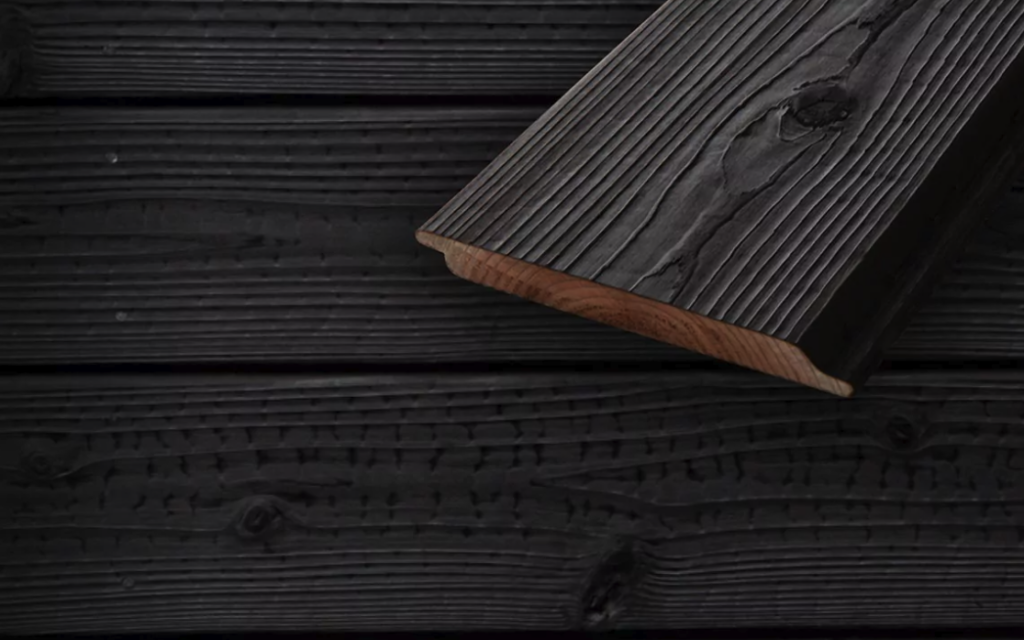
Introduction
In recent years, the Shou Sugi Ban technique has captured the attention of architects, designers, and homeowners alike. This traditional Japanese method of wood preservation through charring has proven to be not only aesthetically pleasing but also incredibly durable. As the trend towards sustainable and eco-friendly building practices grows, Shou Sugi Ban is becoming an increasingly popular choice for both residential and commercial projects. This article explores the history, benefits, and current news surrounding Shou Sugi Ban, highlighting its relevance in today’s architectural landscape.
Understanding Shou Sugi Ban
What is Shou Sugi Ban?
Shou Sugi Ban, also known as Yakisugi, is a traditional Japanese method of preserving wood by charring the surface. Originating in Japan over 300 years ago, this technique was primarily used to enhance the durability of cypress wood (Sugi) against harsh weather conditions, pests, and decay. The process involves burning the surface of the wood, which creates a charred layer that not only protects the wood but also gives it a unique, visually striking appearance.
The History of Shou Sugi Ban
The practice of Shou Sugi Ban dates back to the Edo period in Japan when builders began to notice the benefits of charring wood. Initially used for building homes and temples, the technique became widespread due to its effectiveness in increasing wood longevity. Traditionally, cypress wood was preferred for this technique due to its natural oils that contribute to its resistance to decay. As Japan modernized, the technique fell out of favor, overshadowed by synthetic materials and modern construction methods. However, in recent years, there has been a resurgence of interest in Shou Sugi Ban, particularly among architects and eco-conscious builders.
The Process of Shou Sugi Ban
Step-by-Step Technique
The Shou Sugi Ban process consists of several key steps:
- Choosing the Right Wood: The best woods for Shou Sugi Ban are naturally durable species, such as cedar (Sugi), cypress, or redwood.
- Charring the Wood: The wood is exposed to direct flame, usually with a propane torch or open flame, until the outer layer is charred to the desired level. This can vary from light charring to deep blackening, depending on the aesthetic preference.
- Cooling and Cleaning: After charring, the wood is allowed to cool. Once cooled, the charred layer is brushed off to remove any loose ash and debris. This process can also enhance the wood grain’s appearance.
- Finishing Touches: The wood can be finished with natural oils or sealants to enhance its appearance and protect it from the elements. This step helps to maintain the wood’s color and prevents further degradation.
Benefits of Shou Sugi Ban
Durability and Longevity
One of the primary reasons Shou Sugi Ban is favored in modern architecture is its remarkable durability. The charred layer acts as a protective barrier against moisture, insects, and rot. This process not only prolongs the life of the wood but also reduces the need for chemical treatments, making it a more sustainable choice. For more on sustainable building materials, check out our article on Eco-Friendly Construction Materials.
Aesthetic Appeal
The unique visual qualities of Shou Sugi Ban are also a significant draw for architects and designers. The charring process enhances the wood grain, resulting in striking textures and a deep, rich color. This technique offers a range of finishes, from subtle to dramatic, allowing for versatility in design. To see more design trends, visit our post on Current Design Trends in Architecture.
Sustainability
In a world increasingly concerned with sustainability, Shou Sugi Ban stands out as an eco-friendly option. The technique utilizes natural materials and minimizes the need for chemical preservatives, aligning perfectly with the principles of green building. Additionally, as wood is a renewable resource, using sustainably sourced timber enhances its appeal.
Current Trends in Shou Sugi Ban Architecture
A Resurgence in Popularity
Today, Shou Sugi Ban is experiencing a renaissance in contemporary architecture. With its unique aesthetic and sustainability benefits, designers and builders are embracing this ancient technique in various applications.
Residential Projects
Many homeowners are opting for Shou Sugi Ban in their building projects, utilizing charred wood for siding, fences, and even interior elements like feature walls and furniture. This trend is particularly prevalent in modern homes that prioritize natural materials and a connection to the outdoors. Explore more about modern home designs in our article on Sustainable Home Design.
Commercial Applications
Shou Sugi Ban is also gaining traction in commercial architecture. Restaurants, cafes, and retail spaces are increasingly incorporating this technique into their designs, using it to create warm, inviting environments. The durability of charred wood makes it an excellent choice for high-traffic areas, where wear and tear can be significant. For insights on commercial architecture trends, see our post on Innovative Commercial Spaces.
News and Innovations in Shou Sugi Ban
Recent Projects Utilizing Shou Sugi Ban
Recent architectural projects showcase the versatility and appeal of Shou Sugi Ban. Notable examples include:
- The Japan House in Los Angeles: This cultural space features Shou Sugi Ban siding, emphasizing its connection to Japanese heritage while highlighting modern design principles.
- The Charred House by Kidosaki Architects Studio: Located in Japan, this residence utilizes Shou Sugi Ban not just for aesthetics but also as a practical solution for its coastal environment, showcasing the material’s resistance to harsh weather.
Innovative Techniques and Materials
As interest in Shou Sugi Ban grows, so does innovation in its application. Some architects are experimenting with different wood species, finishing techniques, and even combining Shou Sugi Ban with other sustainable building materials. This exploration leads to unique designs that maintain the traditional integrity of the technique while pushing the boundaries of contemporary architecture.
How to Incorporate Shou Sugi Ban into Your Project
Working with Professionals
If you’re considering incorporating Shou Sugi Ban into your project, it’s essential to work with professionals who have experience with this technique. Architects and builders familiar with the intricacies of charring wood can help you achieve the desired aesthetic while ensuring durability and compliance with local building codes. For more tips on working with contractors, check out our guide on Choosing the Right Contractor for Your Project.
DIY Shou Sugi Ban
For the more adventurous homeowner or DIY enthusiast, Shou Sugi Ban can also be done at home. There are numerous tutorials available that guide you through the charring process safely. However, it’s crucial to understand the necessary precautions, including fire safety and proper ventilation, before attempting this technique yourself. For a detailed DIY guide, see our article on DIY Home Improvement Projects.
Conclusion
The Shou Sugi Ban technique represents a beautiful blend of tradition and modernity, offering both aesthetic appeal and functional benefits. As architects and builders continue to seek sustainable alternatives, Shou Sugi Ban will likely remain a staple in the design world. Its resurgence highlights a growing appreciation for craftsmanship and natural materials, reflecting a shift towards more eco-conscious living. Whether you’re considering a new build, renovation, or simply want to add a touch of character to your space, Shou Sugi Ban is a timeless choice that resonates with both history and modernity.
For more in-depth articles and the latest news in architecture, visit The Newsify. For related content on sustainable building practices and architectural innovations, check out our other posts and resources.
External Links
This article aims to provide comprehensive insights into the Shou Sugi Ban technique, its historical significance, modern applications, and benefits. By blending traditional practices with contemporary design, Shou Sugi Ban remains a relevant and cherished aspect of architectural craftsmanship today.









Leave a Reply